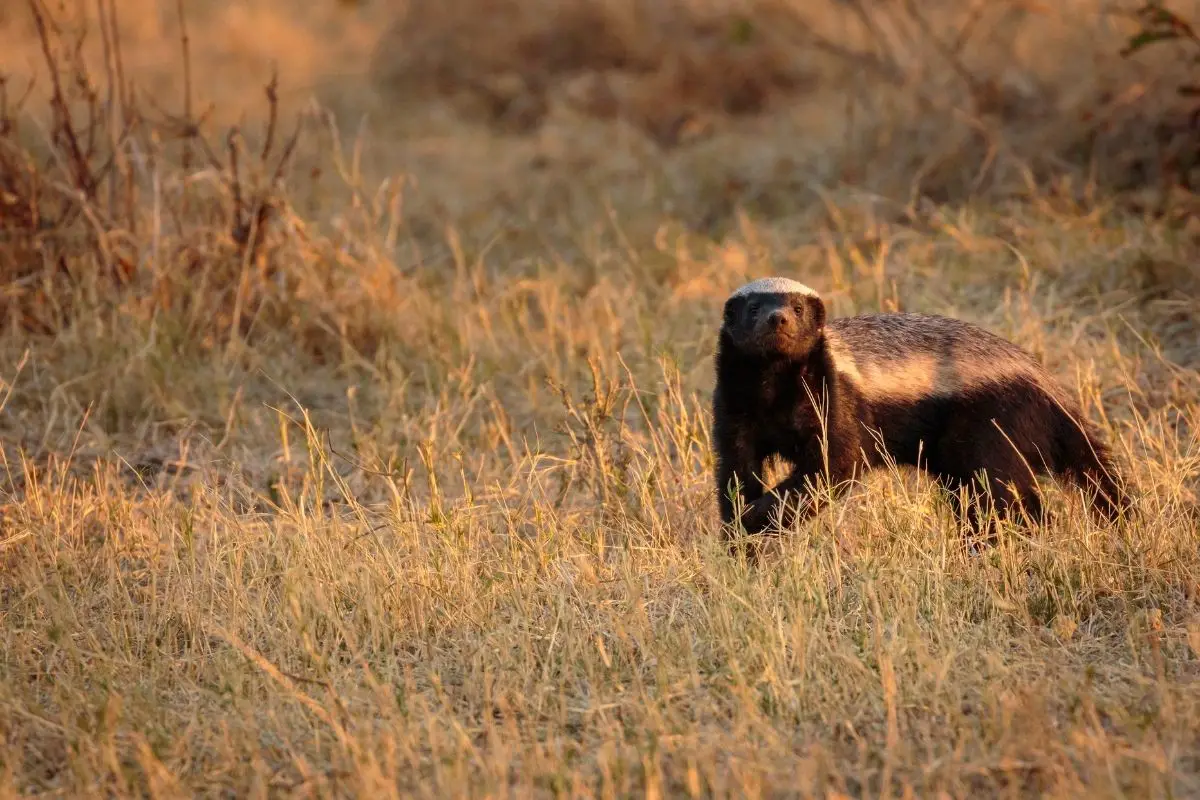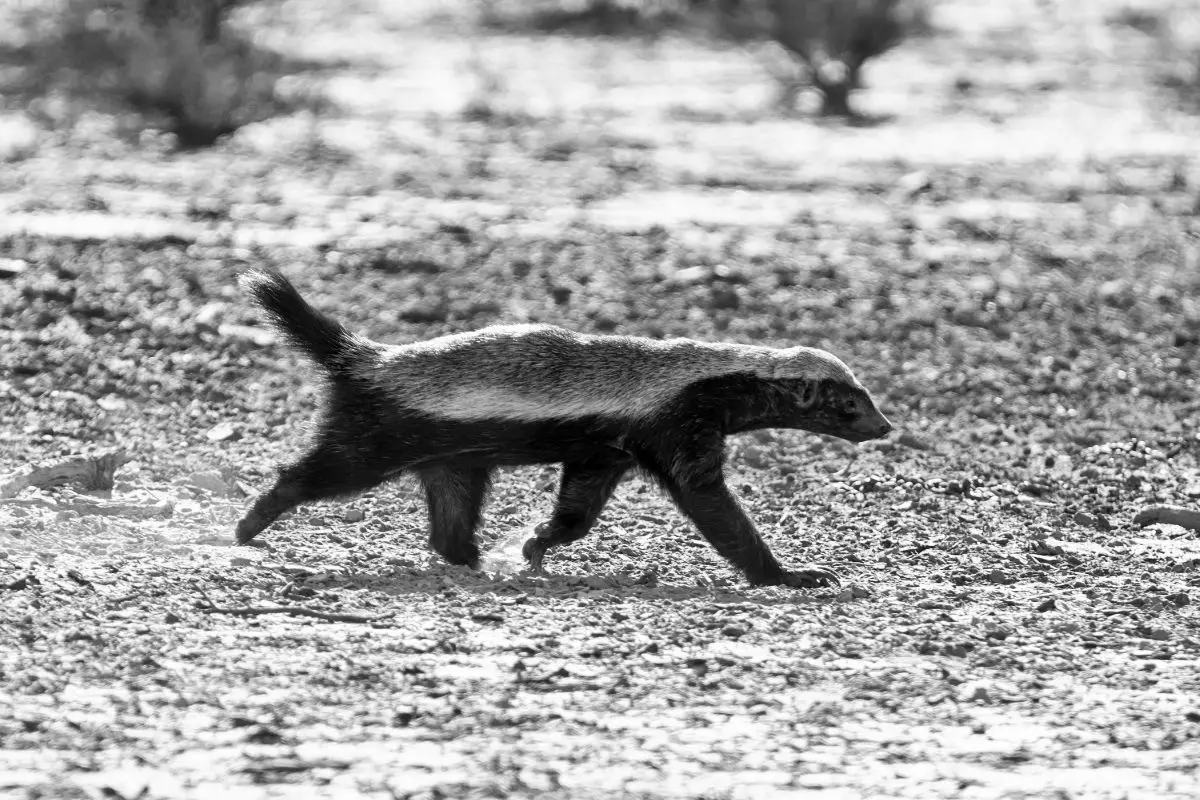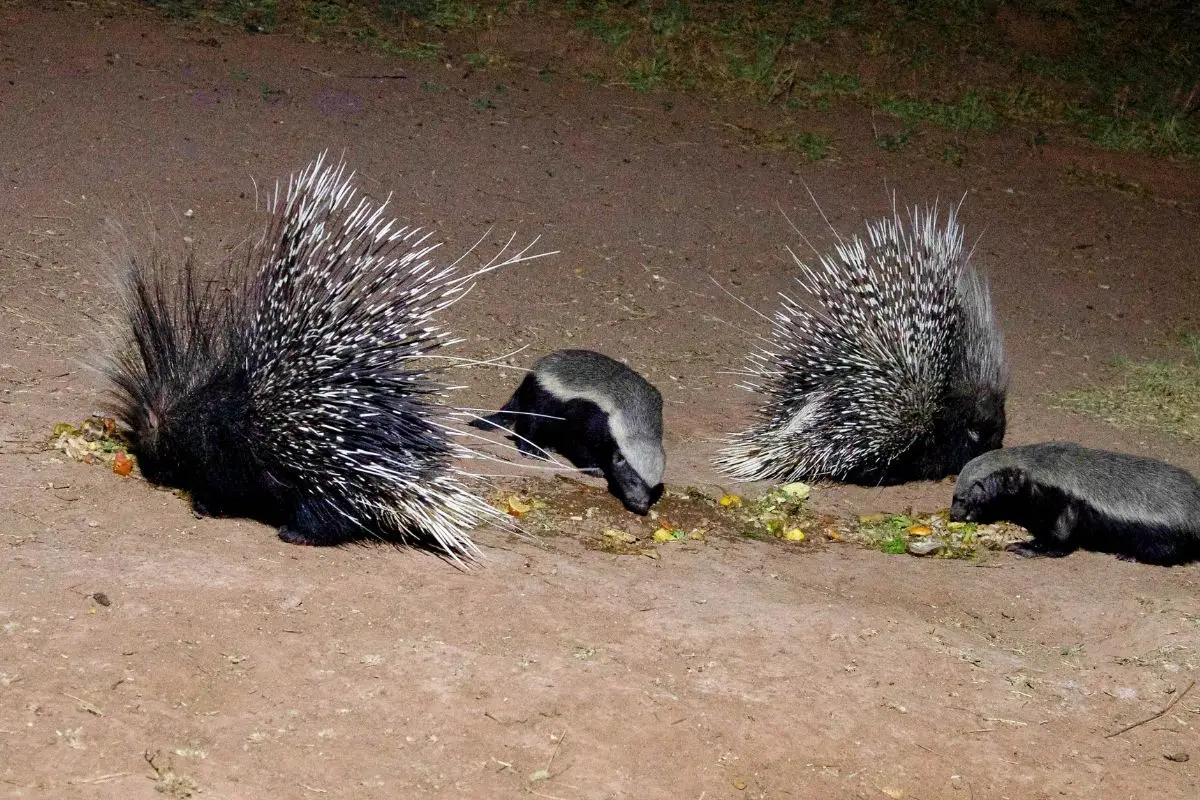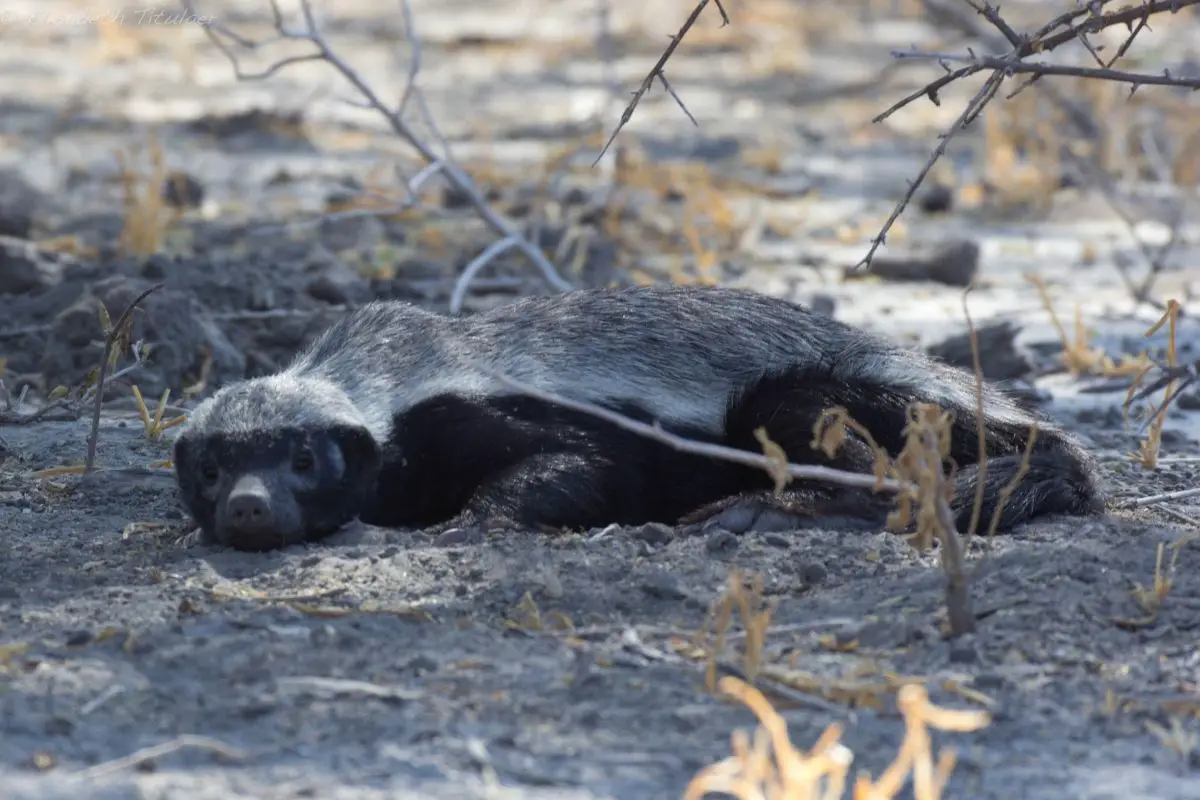
The short answer to this question is that honey badgers are fearless because they have every right to be. They have skin that lets them attack even when held by the neck. They are essentially immune to snake venom and scorpions and have even been known to chase off lions.
With those stats, I’d be fearless too.
Species, Size, and Shape

Honey badgers are members of the weasel family (multelid mellivoinae capensis). Also known as ratels, honey badgers are omnivorous mammals with 12 subspecies. The differences between the subspecies focus on the size and the coloring of the gray stripe on the back. They are
- M. c. Capensis (Cape ratel)
- M. c. Indica (Indian ratel)
- M. c. Inaurita (Nepalese ratel)
- M. c. Leuconota (White-backed ratel)
- M. c. Cottoni (Black ratel)
- M. c. Concisa (Lake Chad ratel)
- M. c. Signata (Speckled ratel)
- M. c. Abyssinica (Ethiopian ratel)
- M. c. Wilsoni (Persian ratel)
- M. c. Maxwelli (Kenyan ratel)
- M. c. Pumilio (Arabian ratel)
- M. c. Buechneri (Turkmenian ratel)
The weight ranges from about 13 pounds to about 30 pounds within all those subspecies. Tails range from 4 inches to about 9 inches, with the corresponding body lengths being about 24 inches to about 40 inches. They range from 9 to 11 inches tall.
Honey badgers live up to 26 years in zoos, but their nocturnal and solitary nature means that we know little about how they live or how long in the wild. The honey badger has a low flattish body with cobby legs and front claws that are up to three inches long and built for digging. Strong muscles in the neck and a heavy jar make for an impressive bite force.
Honey badgers have thick loose skin on their backs and necks. This means that when being held by an attacker by the neck, they can still turn and bite the attacker. Further, the thick skin makes them virtually impervious to porcupine quills, bee stings, and even bites from smaller animals like snakes.
Like its relative, the skunk, the honey badger has a scent gland at the base of its tail. Although this gland allows the honey badger to release quite a stench, it does not have the staying power of skunk scent. Honey badgers sleep in a ball, leaving only their backs’ thick skin and fur exposed and protecting the bell and face.
Honey badgers are endangered in much of their range, in part because beekeepers do kill them. However, badger-friendly beekeeping is now becoming a little more widespread in parts of the honey badger range. This simple process only requires placing the hives a few feet higher than usual. The badgers can’t reach them because they cannot jump.
What They Eat?

A honey badger will eat almost anything – and does. Their name comes from their propensity to claw into beehives. It was once assumed this was for the honey, but it turns out to be at least as much for the bee larvae.
Bee Larvae Badger isn’t as cool a name, of course, so honey stays. They also like to eat snakes and scorpions. Obviously, immunity to most venoms and bee stings carries an advantage in allowing access to food sources most animals avoid.
It also means that the animal isn’t particularly afraid of bees, venomous snakes, or scorpions. Sometimes they will sleep for several hours after a bite, but even potent venoms do not kill them.
Where They Sleep?

Honey badgers sleep in well-made underground burrows about six feet deep and nine feet long. They usually dig them for themselves but are known to take over burrows previously made by other animals, especially hares, mongooses, and foxes, and make them suit their own needs. Mostly solitary, when ratels do meet the sniff one another and scent mark.
Who They Stand Up To?
Honey badgers are famous for standing up to lions and hyenas and pretty much anyone else that wants to quarrel with them. They are not nice animals and, in captivity, will attack their owners and any other animals the owner has. Lions, leopards, and hyenas have attacked honey badgers.
Sometimes they lose and become dinner; often, the larger animals decide dinner isn’t worth the price it is charging. This is particularly true given the honey badger’s ability to turn and bite its attackers. Generally, people view the honey badger as, for its size, among the fiercest animals in the world.
They take on lions, tigers, hyenas, and leopards. They are also among the grumpiest, most easily annoyed animals in the world and will attack until they can no longer do so. One of their favored fighting techniques is to go for their opponent’s testicles, and appropriately vicious style.
Honey badgers take on these large predators and will, on occasion, actually kill the younger ones. Lions are apex predators, after all, and do have just a few physical advantages over a honey badger. But, that simply does not stop the honey badger.
They are built for combat. They have long claws of up to two inches and enough bite force to break into a tortoiseshell. In fact, their bite force is significantly stronger than that of either the American black bear or the brown bear.
Their teeth are razor sharp and readily displayed when the animal growls or hisses. Their skins are pretty much invulnerable to teeth, arrows, spears, knives, and machetes. However, they aren’t bulletproof and can also be killed with a heavy blow or a gunshot to the head.
Honey badgers are marathoners, not sprinters. Their top speed is 19 miles per hour, which isn’t so bad, but they generally rely on the persistence of their chase rather than its speed. The honey badger can be an extremely dangerous animal, but it usually only attacks when threatened or cornered.
If it feels that way, it will attack humans, horses, dogs, snakes, lions, tigers, leopards, and hyenas. The National Geographic Channel also says it’s the meanest animal in the world. In the end, if cornered, a honey badger will take on anyone or anything.
The Guinness Book of World Records calls it the most fearless animal there is, and it lives up to its PR. Search for lions and honey badgers on the internet, and you will find dozens of videos of badgers and lions fighting. Usually, the badger walks away. The sharer of one such video wrote,
The money badger is known for its strength, ferocity, and toughness. It is known to savagely and fearlessly attack almost any other species when escape is impossible, reportedly even repelling much larger predators such as lion and hyena.



